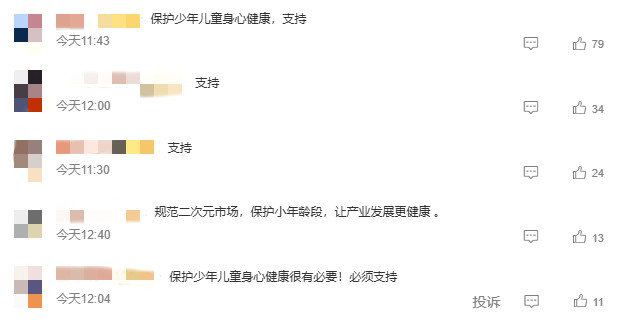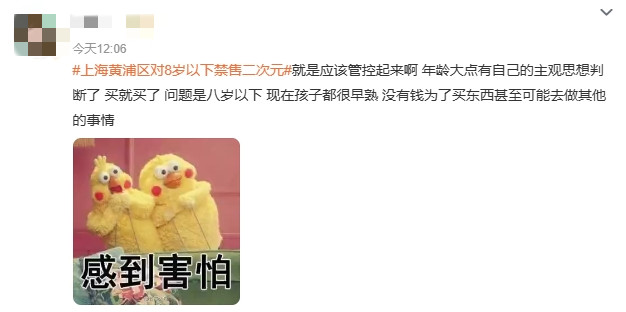Shanghai Huangpu District plans to ban the sale of 2D products to children under 8 years old, causing controversy
Recently, a topic about "Shanghai Huangpu District banned the sale of 2D for under 8 years old" has become a hot search on Weibo, causing widespread discussion in the society. According to the "Notice on Regulating the Consumption of Second-Dimensional Cultural Products for Minors (Draft for Comments)" issued by the Market Supervision and Administration Bureau of Huangpu District, Shanghai, the local government plans to restrict the sales of second-Dimensional related products (including animation derivatives, game peripherals, etc.) to children under the age of 8, and requires merchants to strictly implement age verification measures. This move aims to protect minors from inappropriate content, but it also stirs up waves in the second-dimensional cultural circle.

The "Notice" clearly states that content involving violent, bloody, terror elements or "adult-oriented" implies in the 2D products may cause cognitive bias to young children. A staff member of the Huangpu District Market Supervision Bureau said: "For profit, some merchants sell IP peripherals with complex worldviews or controversial plots to children. Parents report that their children have problems such as imitating characters and being addicted to the virtual world." The policy requires merchants to verify the age of consumers before selling. If they sell illegal goods to children under 8 years old, they may face rectification or fines.

This policy quickly aroused controversy among many parties. The supporter believes that as a subculture product, some of its works do have "not suitable for children" content, and age restrictions are necessary to protect. Ms. Wang, a parent, admitted: "The child was once scared by horror anime characters. This type of product should not appear in children's stores."

But the opposition is also fierce. A second-dimensional enthusiast said: "This is a prejudice against culture. Many works convey courage and friendship, and one-size-fits-all ways to make children lose the opportunity to be exposed to high-quality content." Merchants are worried about the difficulty of policy implementation: "How to define the 'adult direction'? If promoted nationwide, the losses in the industry are difficult to estimate."

Legal experts pointed out that my country has not yet established a unified animation rating system. Although the policies of Huangpu District are exploratory, they lack national-level standards support, which may trigger regional regulatory differences. Lawyer from a law firm in Shanghai suggested: "The content grading label and reporting mechanism need to be improved simultaneously to avoid 'sucking food due to choking'."

Shanghai, as a major cultural center in the second dimension, has rich consumption scenarios such as animation exhibitions and theme cafes. Data shows that the annual sales of animation derivatives in Huangpu District exceeded 200 million yuan, of which children's consumption accounted for 35%. If the policy is implemented, merchants may need to adjust their product lines and turn to "all-age-oriented" content, and some small and medium-sized stores may face survival pressure.

It is worth noting that Japan, Europe and the United States have established mature animation rating systems, and many places in China have also tried to manage games, film and television and other content in a hierarchical manner, but have never formed a unified framework. Although the policy of Huangpu District this time is limited to region and age, it has once again ignited the public's discussion on the cultural consumption rating system.
At present, the Huangpu District Market Supervision Bureau stated that the policy is still in the stage of soliciting opinions on public opinion, and the final terms will be adjusted based on social feedback. This debate on "protection" and "freedom" may promote China's second-dimensional industry to a more standardized and segmented development.








